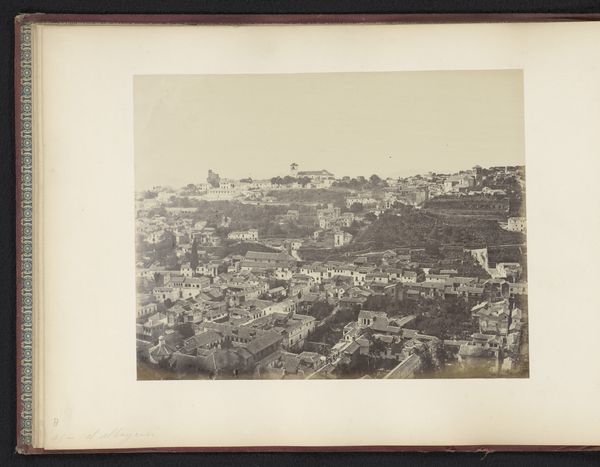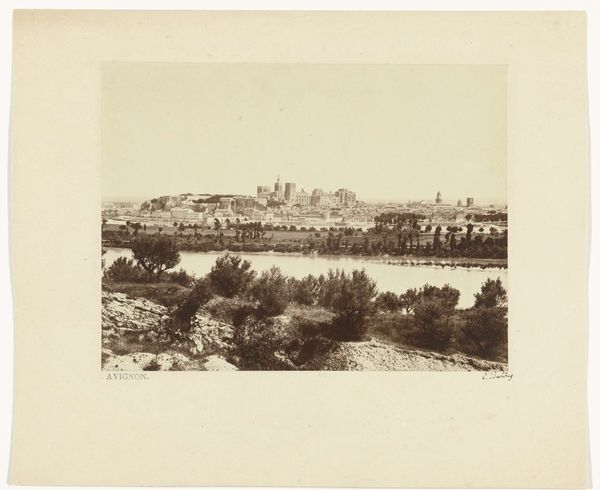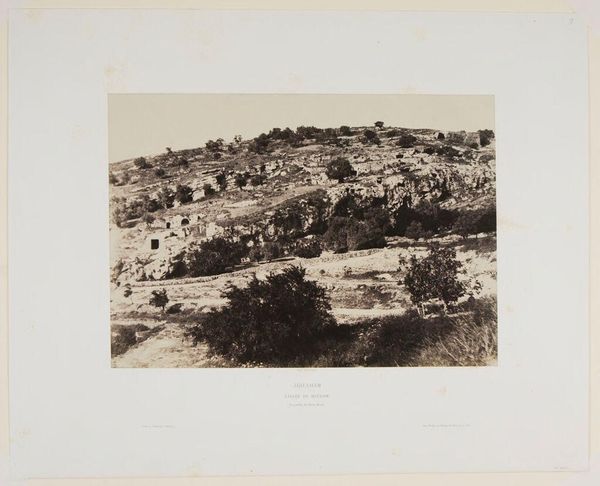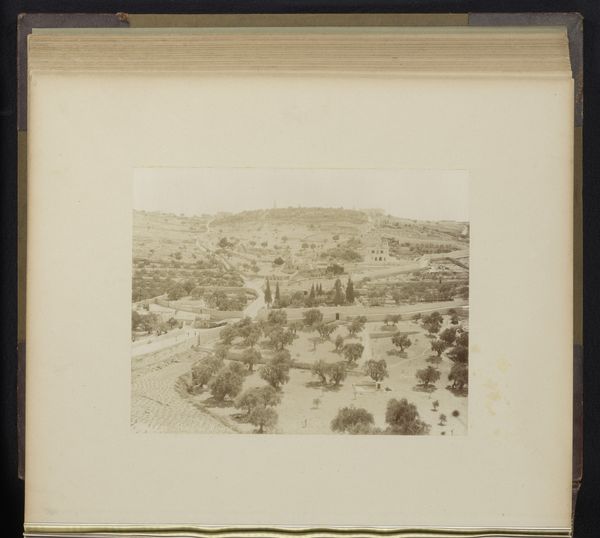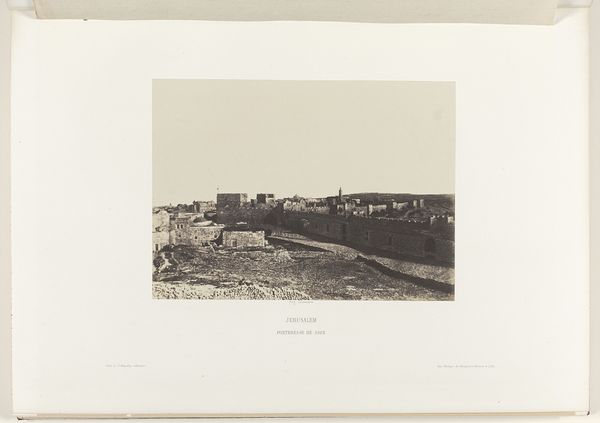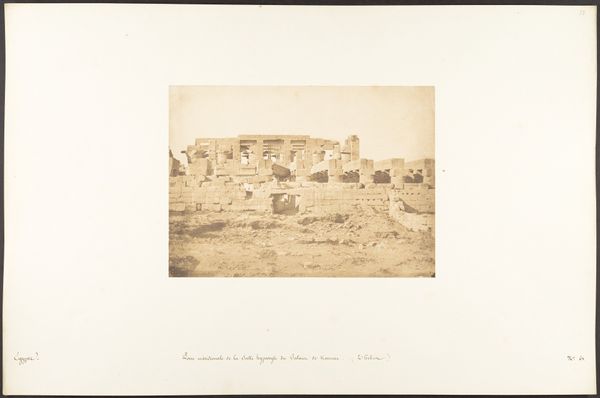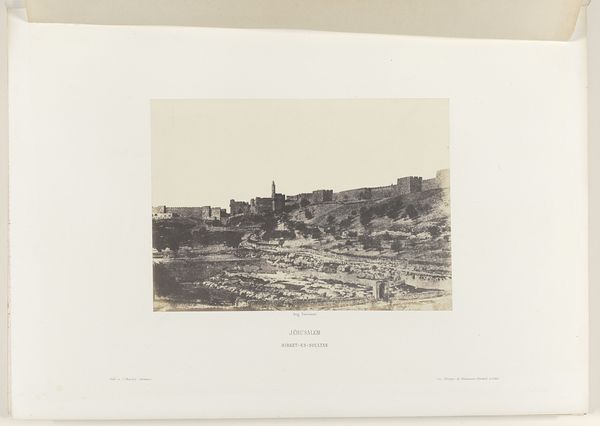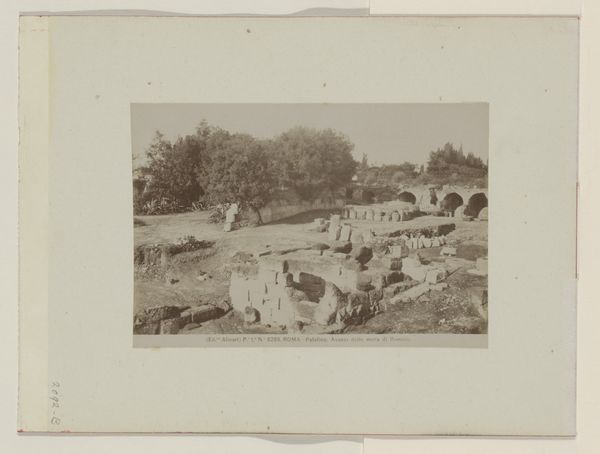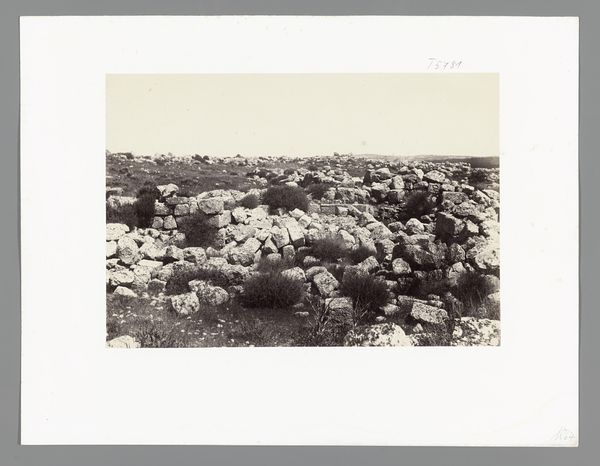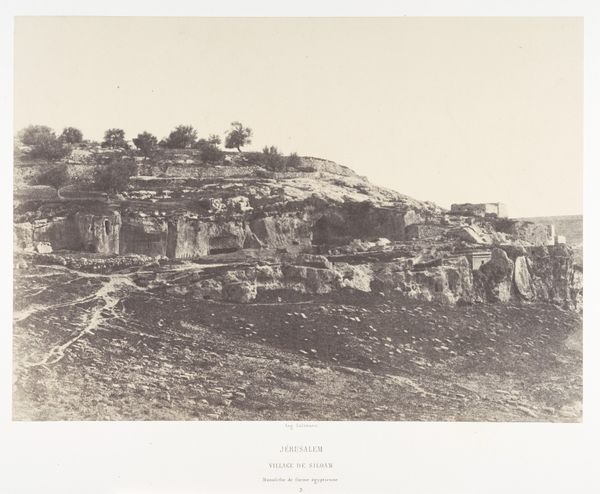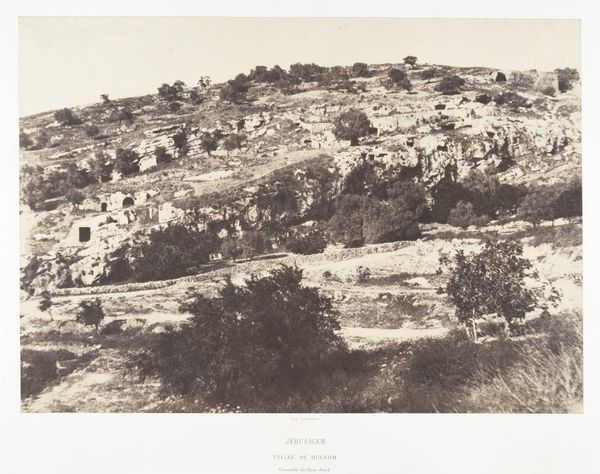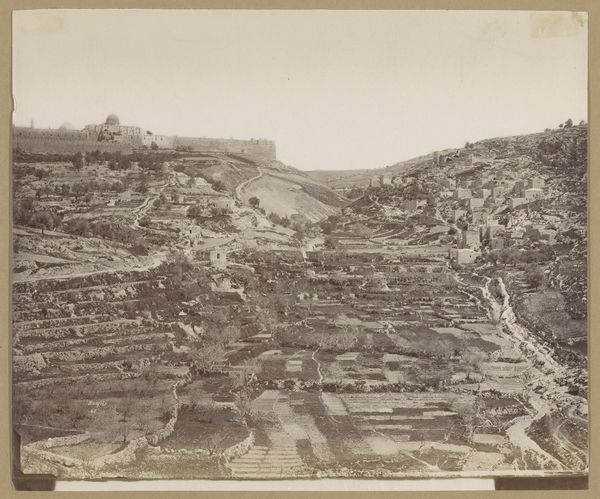
Gezicht op de ruïne van het Griekse amfitheater te Syracuse, Sicilië 1857 - 1914
0:00
0:00
photography, albumen-print
#
negative space
#
landscape
#
photography
#
ancient-mediterranean
#
cityscape
#
albumen-print
Dimensions: height 310 mm, width 384 mm
Copyright: Rijks Museum: Open Domain
Curator: Before us, we have Giorgio Sommer's photograph, titled "Gezicht op de ruïne van het Griekse amfitheater te Syracuse, Sicilië," likely created sometime between 1857 and 1914. The piece is an albumen print. Editor: It’s undeniably melancholic. All that weight of history captured in soft sepia tones. You can almost feel the silence of the ruin. Curator: Precisely. Let’s think about the material context here. Sommer, a German photographer, traveled extensively in Italy. The albumen print process itself is interesting, involving coating paper with egg white and silver nitrate. This process yielded incredibly detailed prints but was labor intensive, impacting how photography was then regarded, somewhere between reproducible image and crafted object. Editor: I am interested in the performance of history captured here. Think about colonialism. The Grand Tour, right? Affluent Europeans traveling, collecting images and artifacts, claiming ownership—intellectually and often physically—of classical history and culture. This photograph becomes a little symbol of that power dynamic, the past repackaged and consumed for Western eyes. Curator: A vital point. Also consider the choice of subject. The Greek theater – a site of great cultural and political significance. Its depiction here is now a romantic ruin. I think we have to acknowledge this depiction in how societies deal with power. Editor: Sommer's choices – framing, lighting – contribute to this romantic vision. The landscape almost swallows the ruins, emphasizing its isolation and decline. The theater served specific socio-political and even class functions. We must question who was included and excluded, and how has our modern, mediated understanding perhaps obscured it. Curator: Right. And from the point of labor, we need to note the economic relations implicit in producing a photograph in 19th-century Italy and distributing these images internationally, shaping perceptions of places and historical legacies, like we are experiencing it here, too. Editor: It's this layering of meaning that makes engaging with art, like Sommer's photograph, such an active experience. Curator: I agree. Focusing on process and context grants a fuller view, illuminating a cultural memory now ossified as melancholic romanticism.
Comments
No comments
Be the first to comment and join the conversation on the ultimate creative platform.

